Lacanobia (Diataraxia) oleracea
(Linnaeus, 1758)
-
 Subfamily: Hadeninae, Hadenini
Subfamily: Hadeninae, Hadenini -
 Wingspan: 34-44 mm
Wingspan: 34-44 mm -
 Flight period: Apr - Sep
Flight period: Apr - Sep -
 Spread: Common
Spread: Common -
 Host plants: Polyphagous
Host plants: Polyphagous
Information
Lacanobia oleracea also called Bright-line Brown-eye is a moth of the Noctuidae family, Hadeninae subfamily,
with wingspan of 34-44 mm.
It is distributed in most of Europe, it is absent from Iceland.
Its range extends to North Africa (Morocco and Algeria), Syria, northern India, China, and Japan.
In Italy it is also present in the islands *
The wings of the Lacanobia oleracea are red with a brown / reddish color with gray veins, whitish towards the termen.
A reniform stigma of an orange color faded in its upper part, dark below, is also visible a round orbicular ,
with white border, sometimes very small. On the termen there is a thin white submarginal line, toothed on the veins 3 and 4.
The hind wings are white / greyish, with brown dusting towards the Termen, and marked with dark veins.
Head and thorax are in the background color of the front wings while the abdomen covered by a thick hair resembles the hind wings except for a dark shaded band in the center.
The Lacanobia oleracea flies in two generations from April to September. ***
They are attracted to artificial light, sugar and nectar-rich flowers. It is found in gardens, on farmland, along rivers and streams, and in various other habitats
come clearings. In any case, it prefers humid sites. ***
The species overwinters as a pupa.
The eggs are spherical, slightly flattened, knurled, white / greenish in color, they are laid in groups and overlapping plates. **
The larva is green or brown dotted with white with black and yellow spiracular lines along the side with darker edges. The tubercles are black.
The brown / brown chrysalis forms inside a silky cocoon covered with soil residues. **
Two fine appendages are visible on the Cremaster.
The larvae are polyphagous but seem to prefer the Chenopodiaceae such as the Atriplex and occasionally infest the cultivated tomatoes.
* Lepidoptera mundi https://lepidoptera.eu/ - Fauna Europea https://fauna-eu.org/
** Bestimmungshilfe für die in Europa nachgewiesenen Schmetterlingsarten - http://lepiforum.de/
*** Roland Robineau, Guide de papillons nocturne de France, Delachaux et Niestlé, 2011 p.140
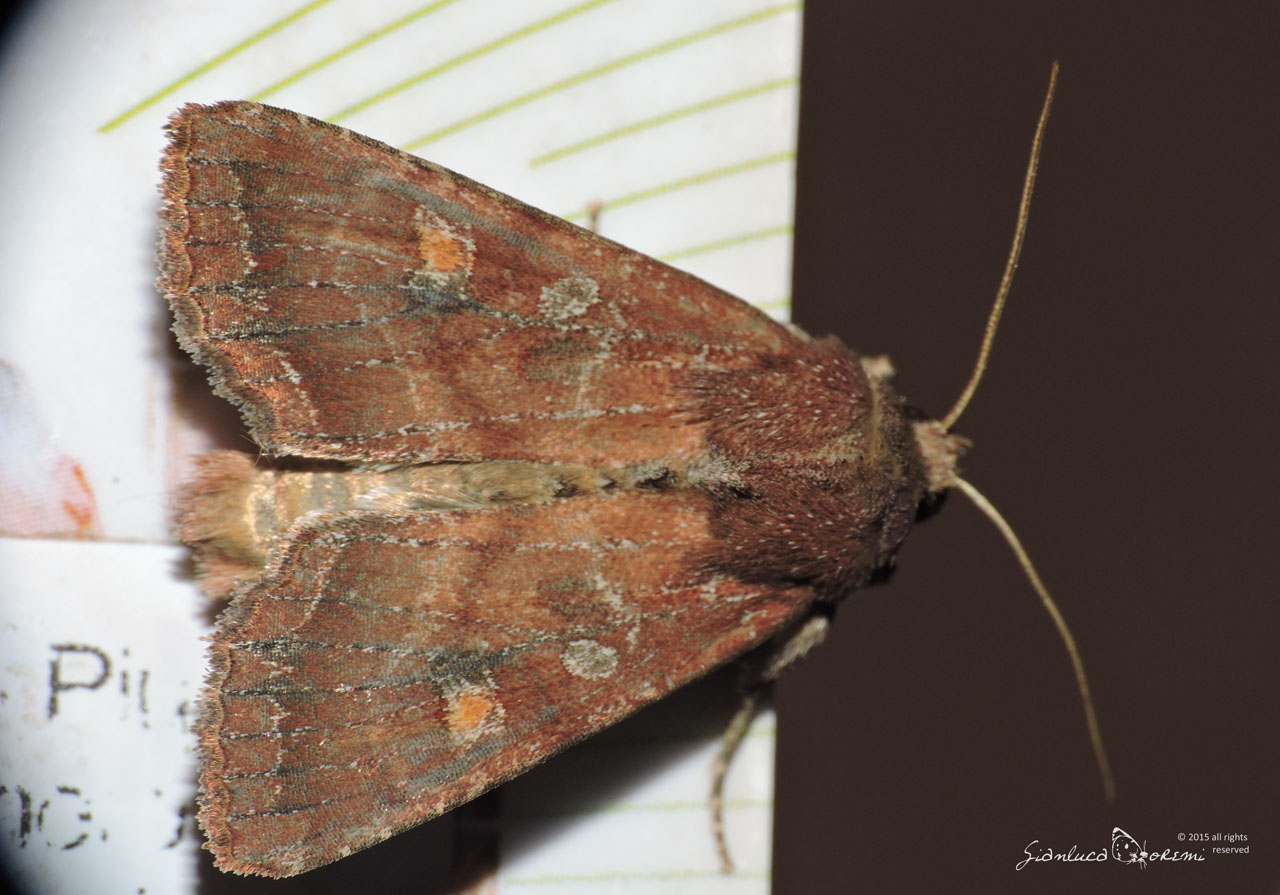
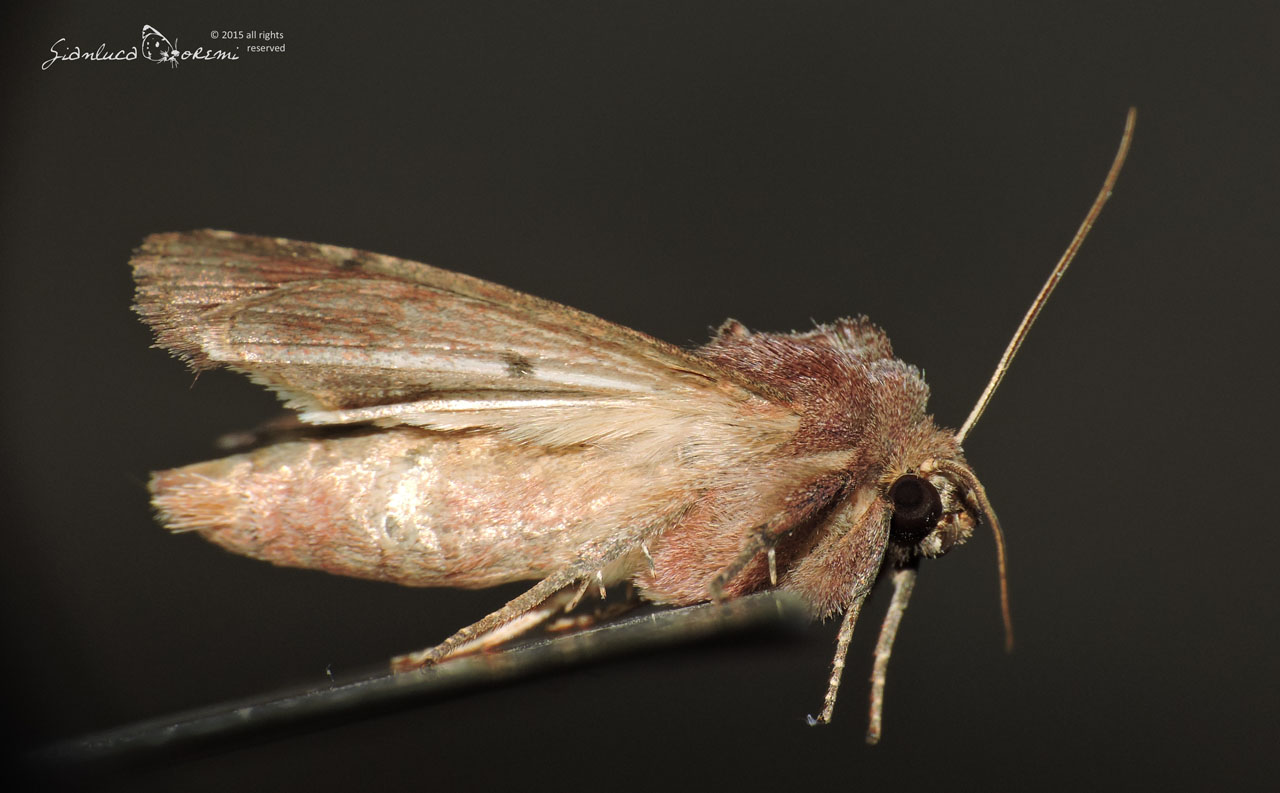
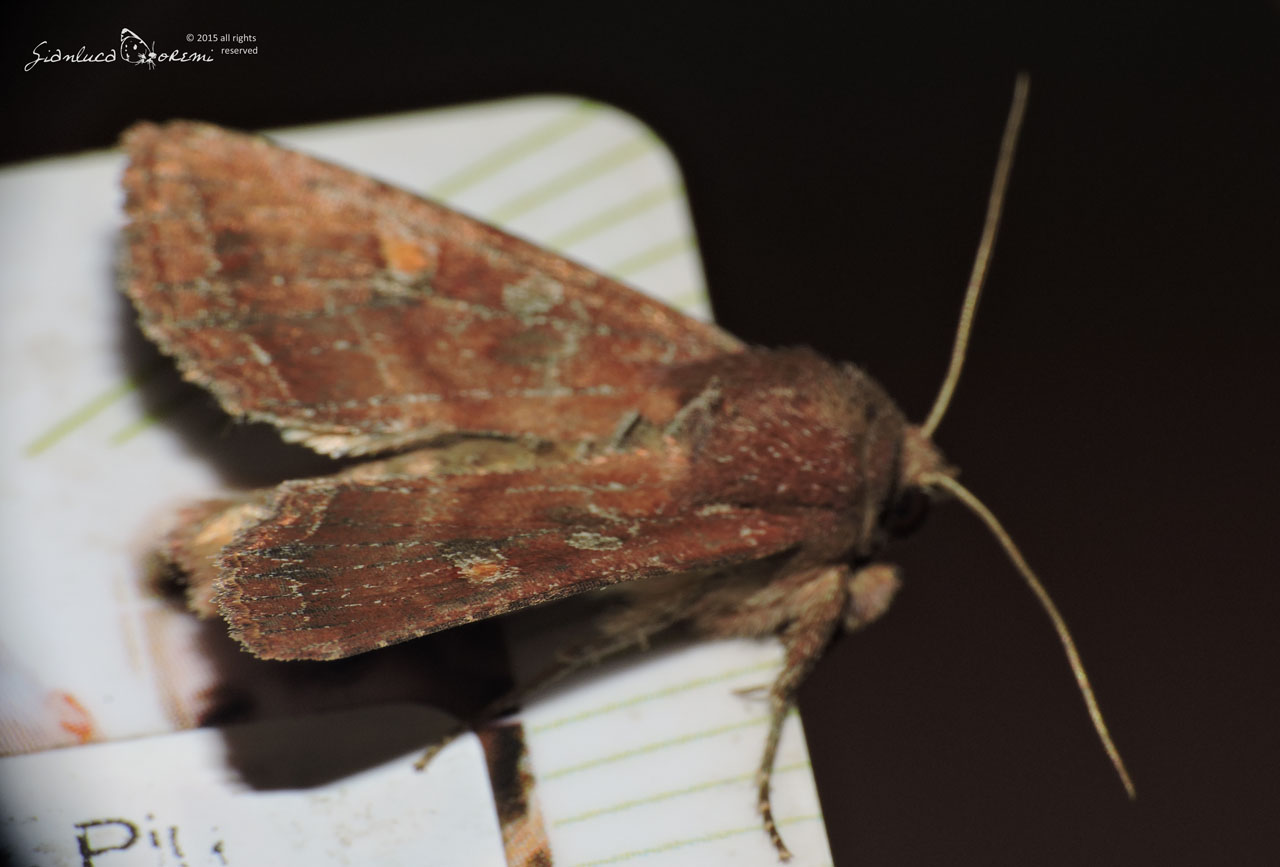
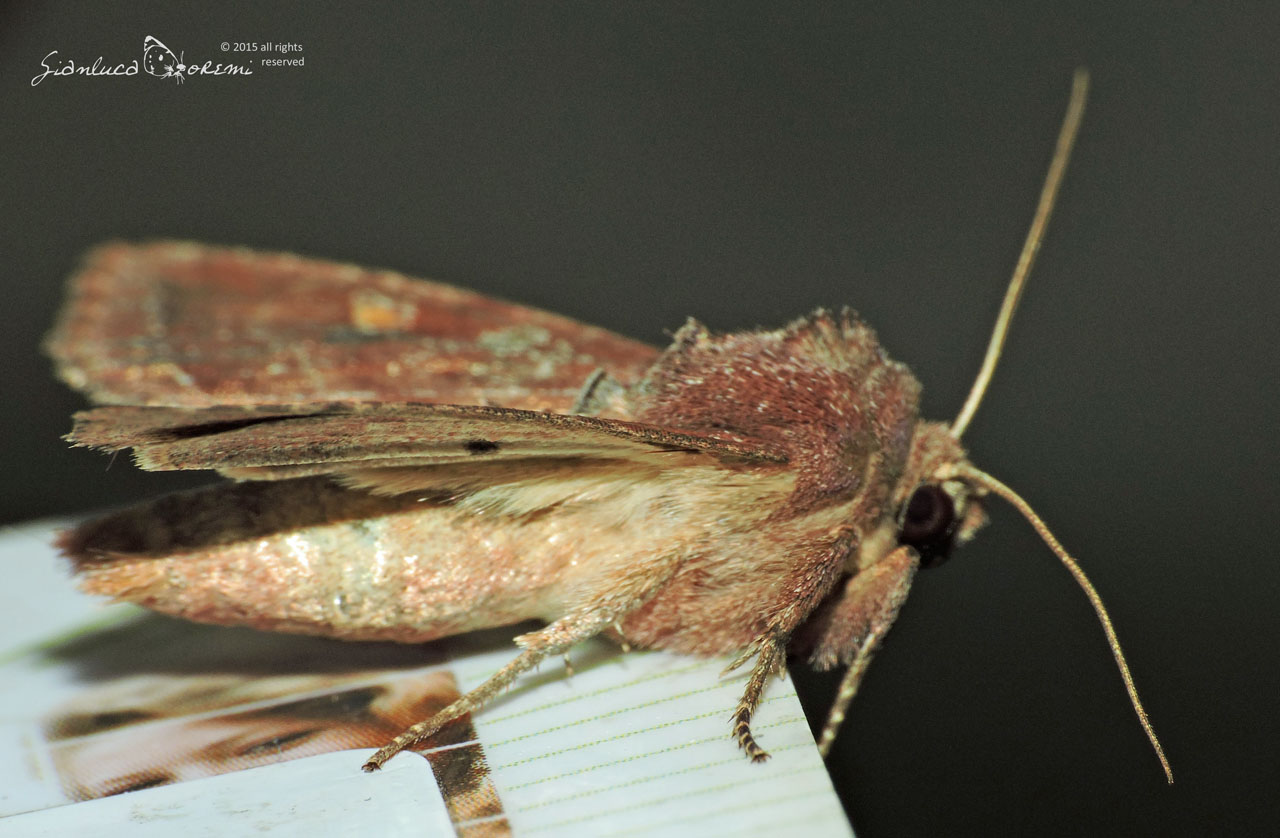
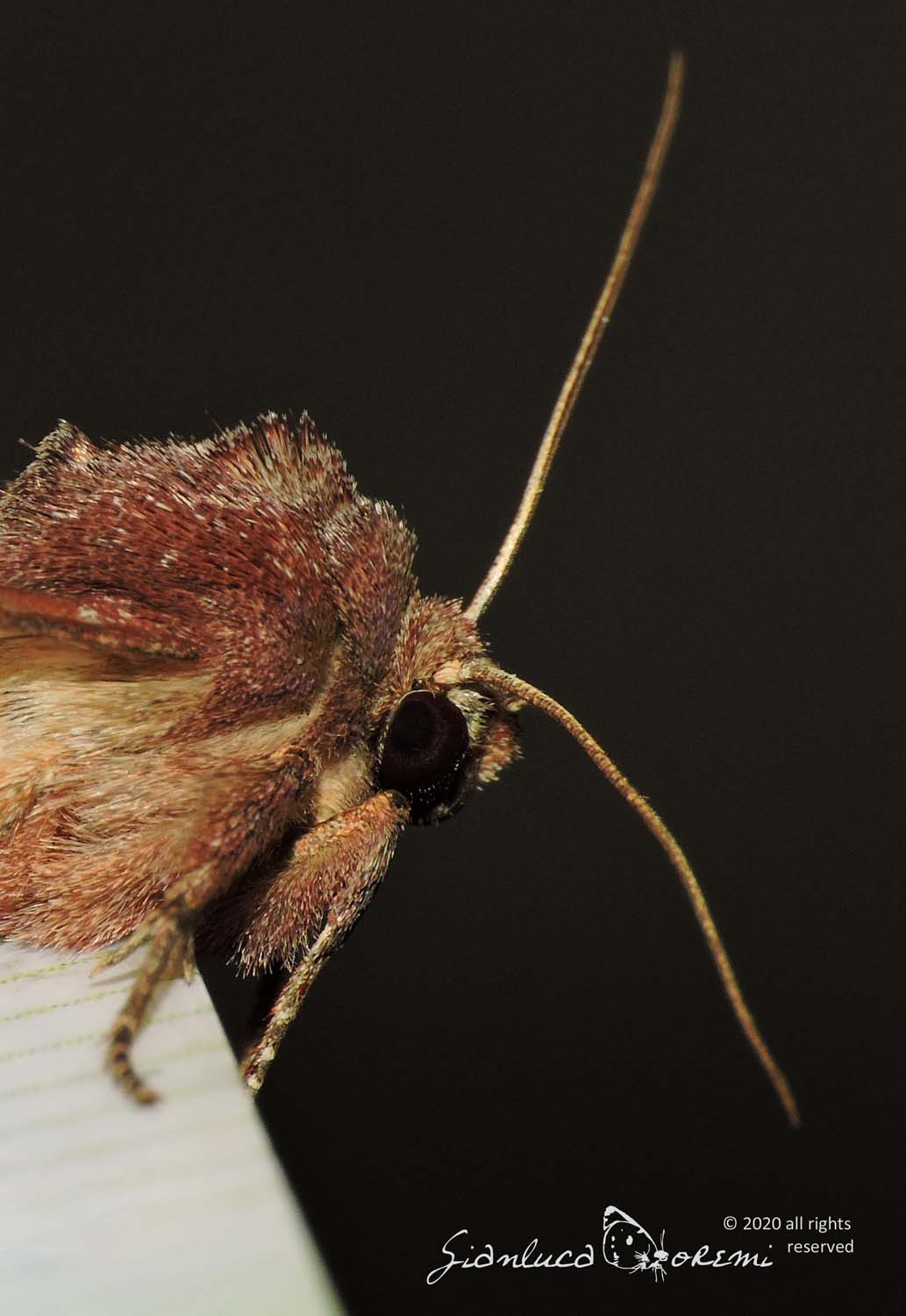
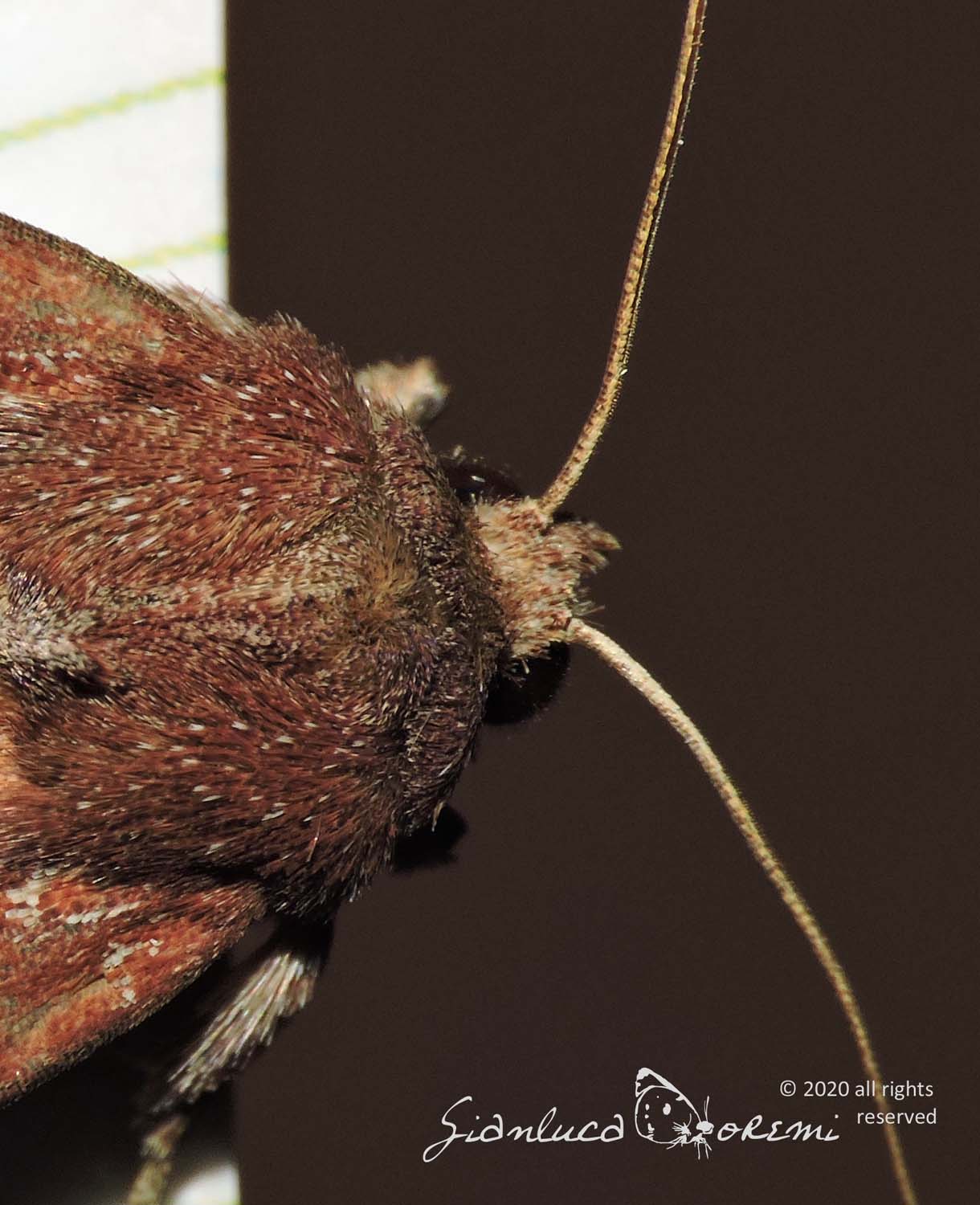


 EN
EN ITA
ITA
Social and publications